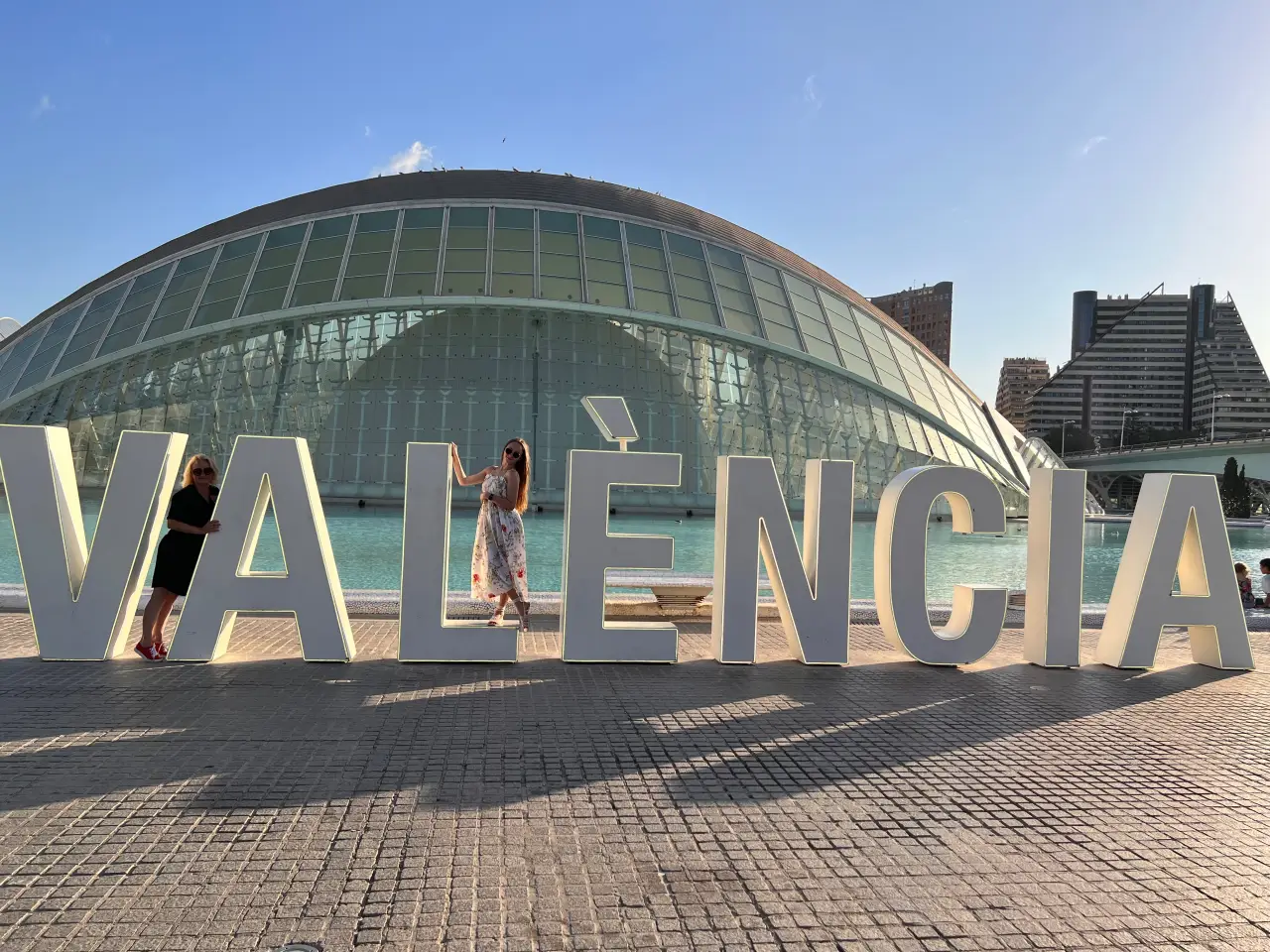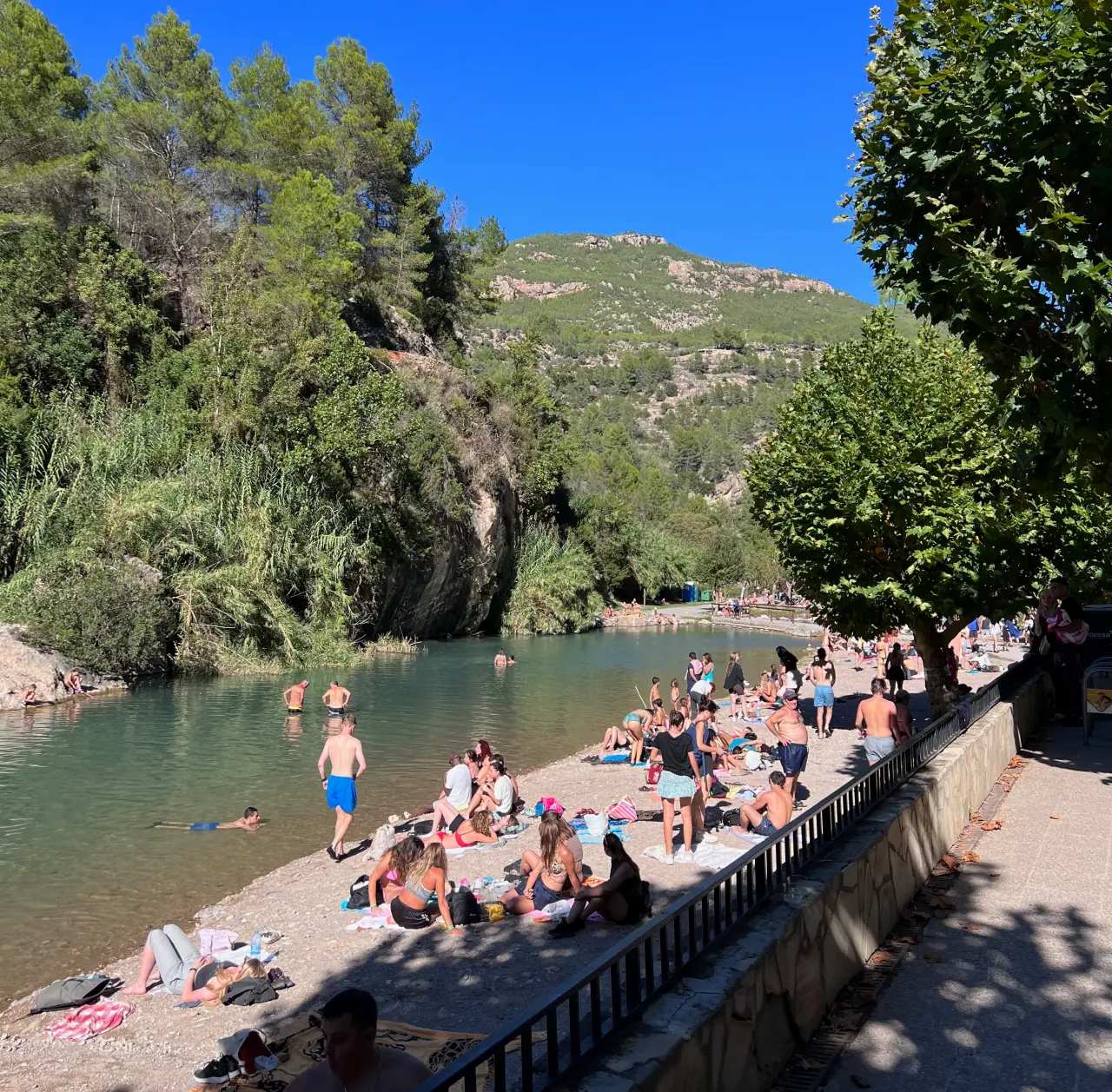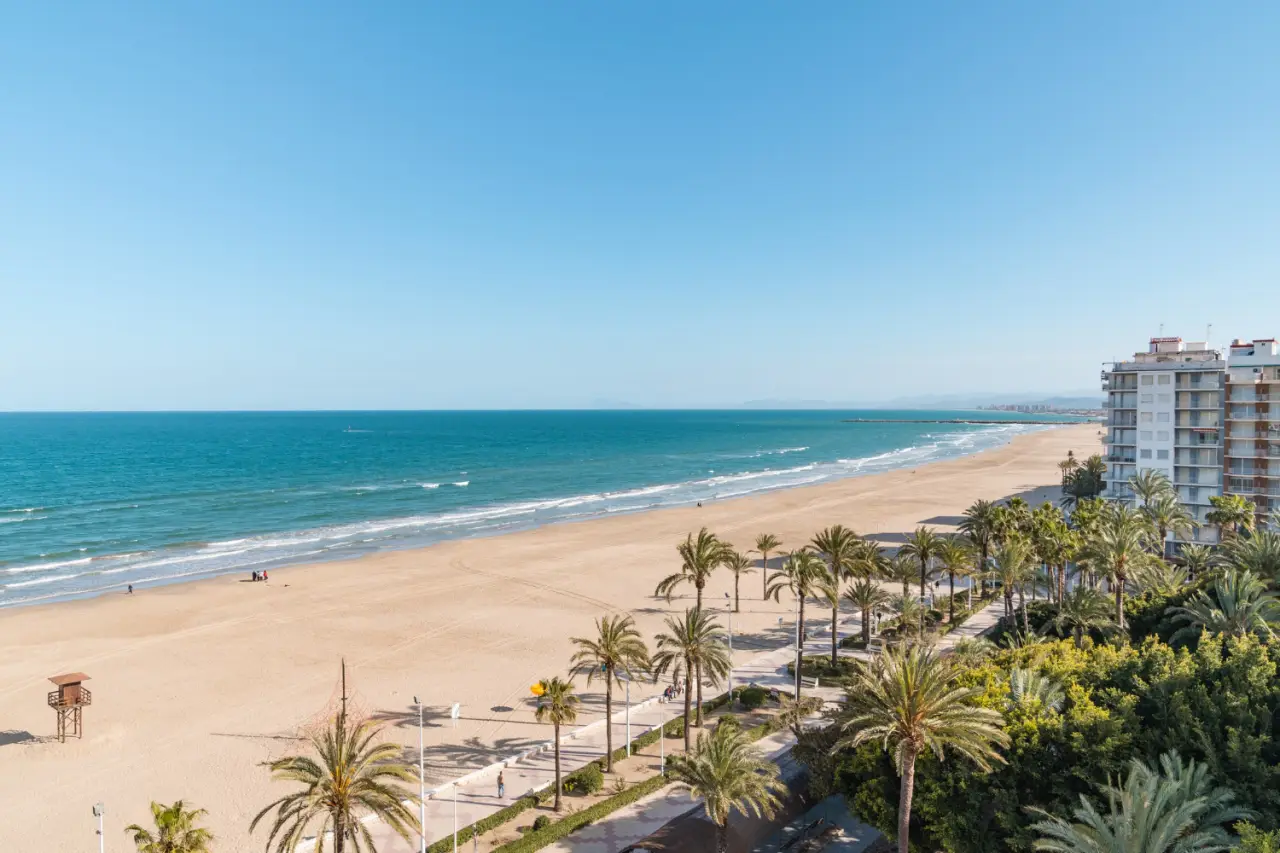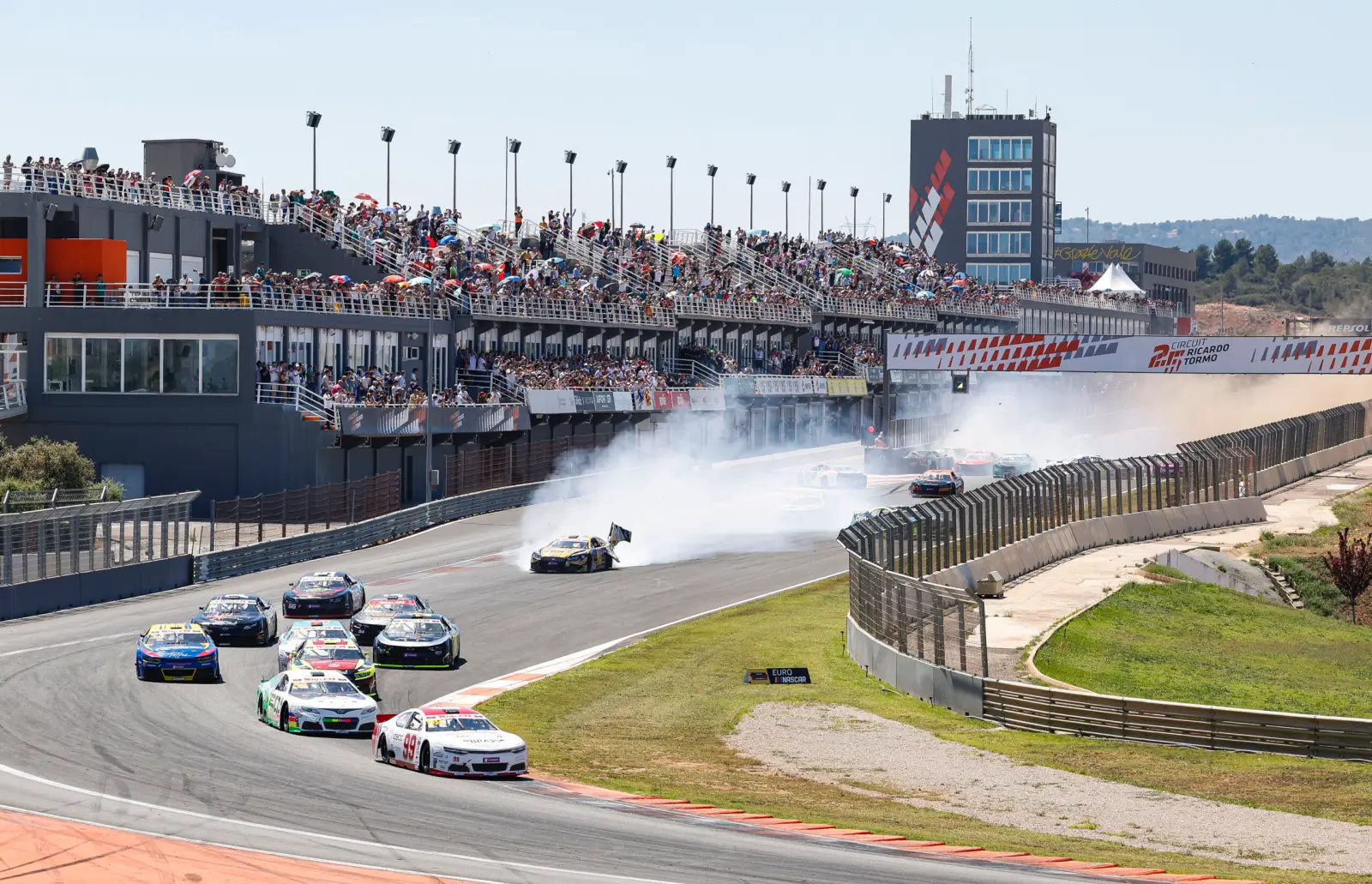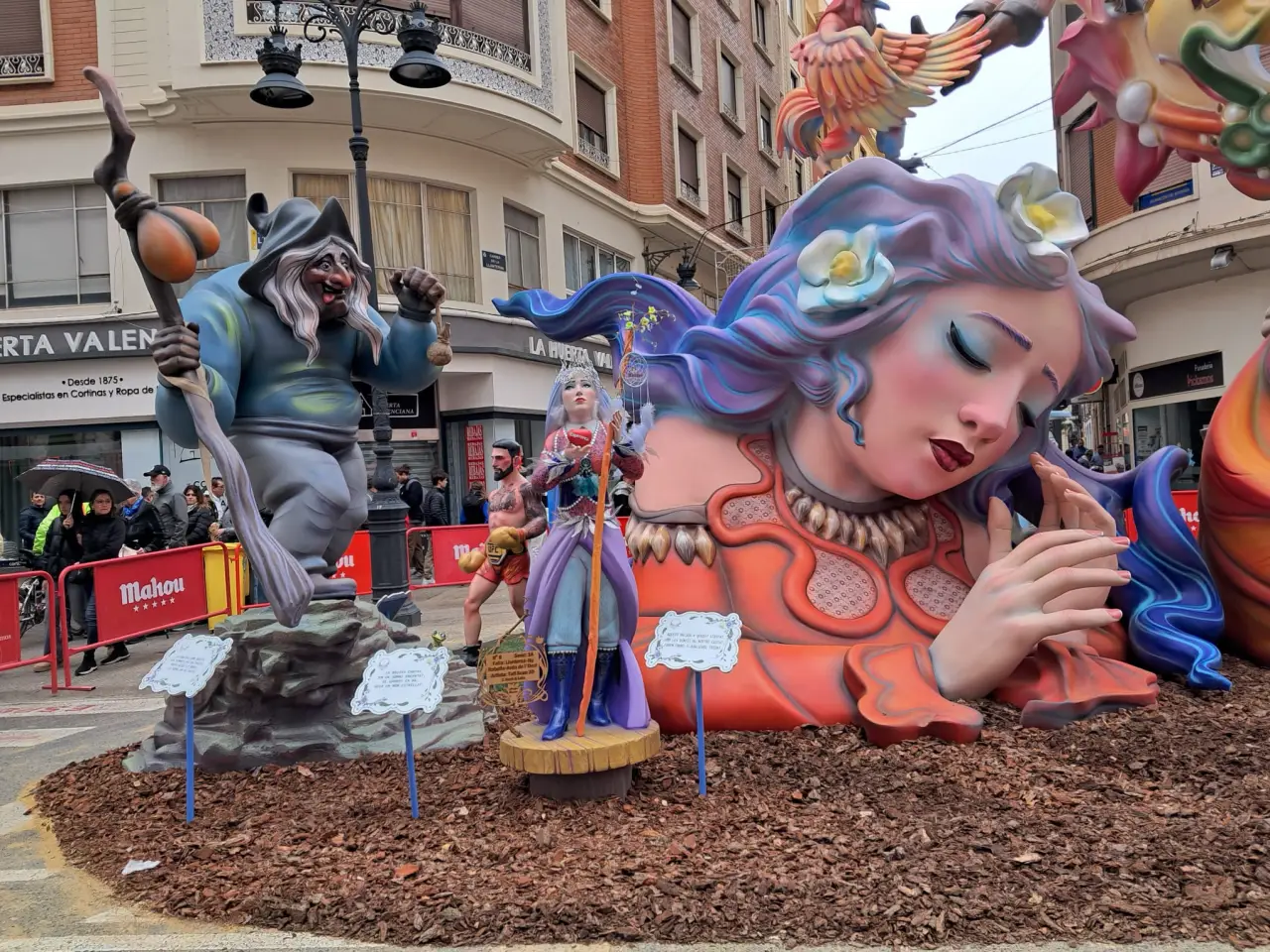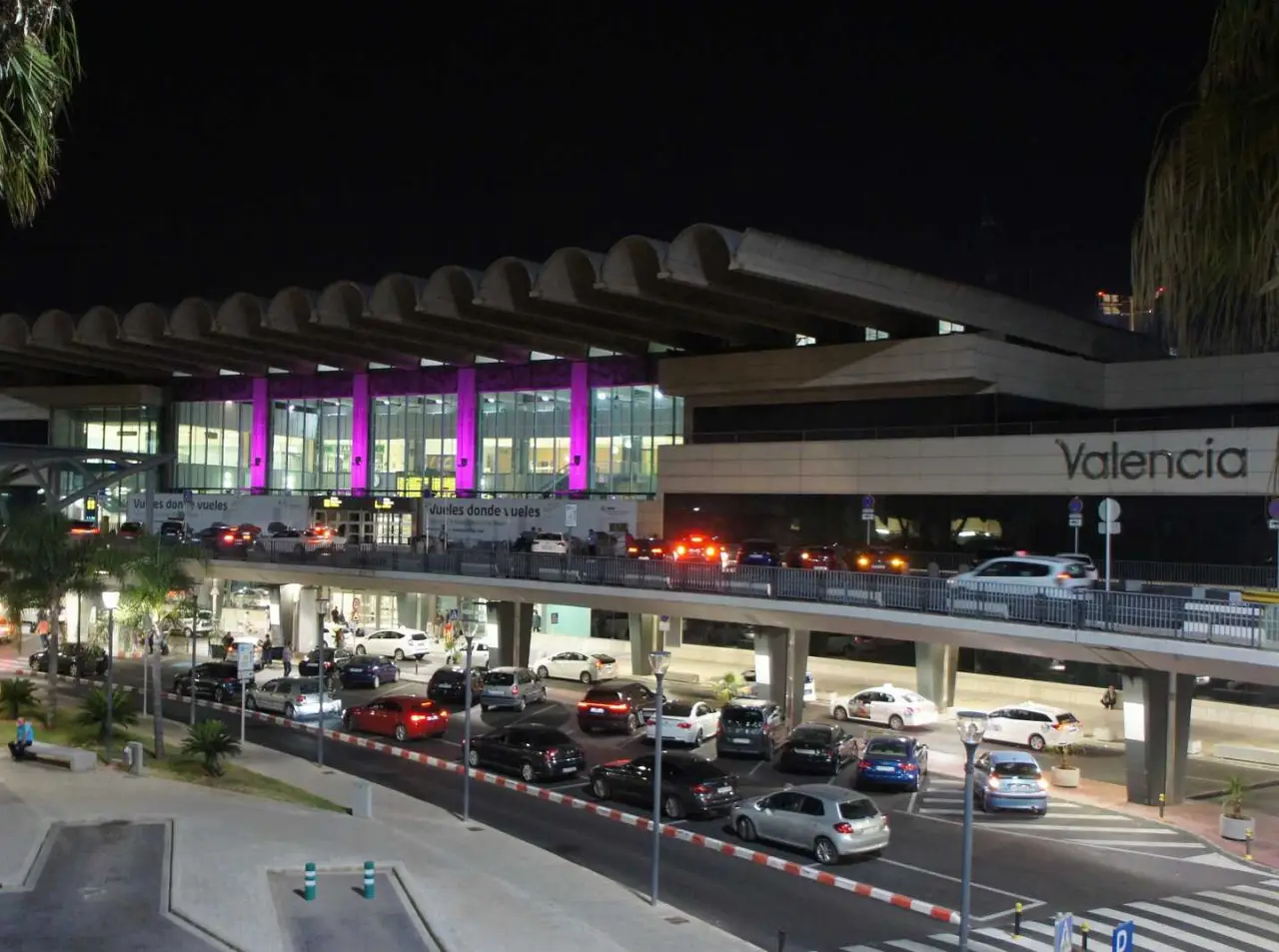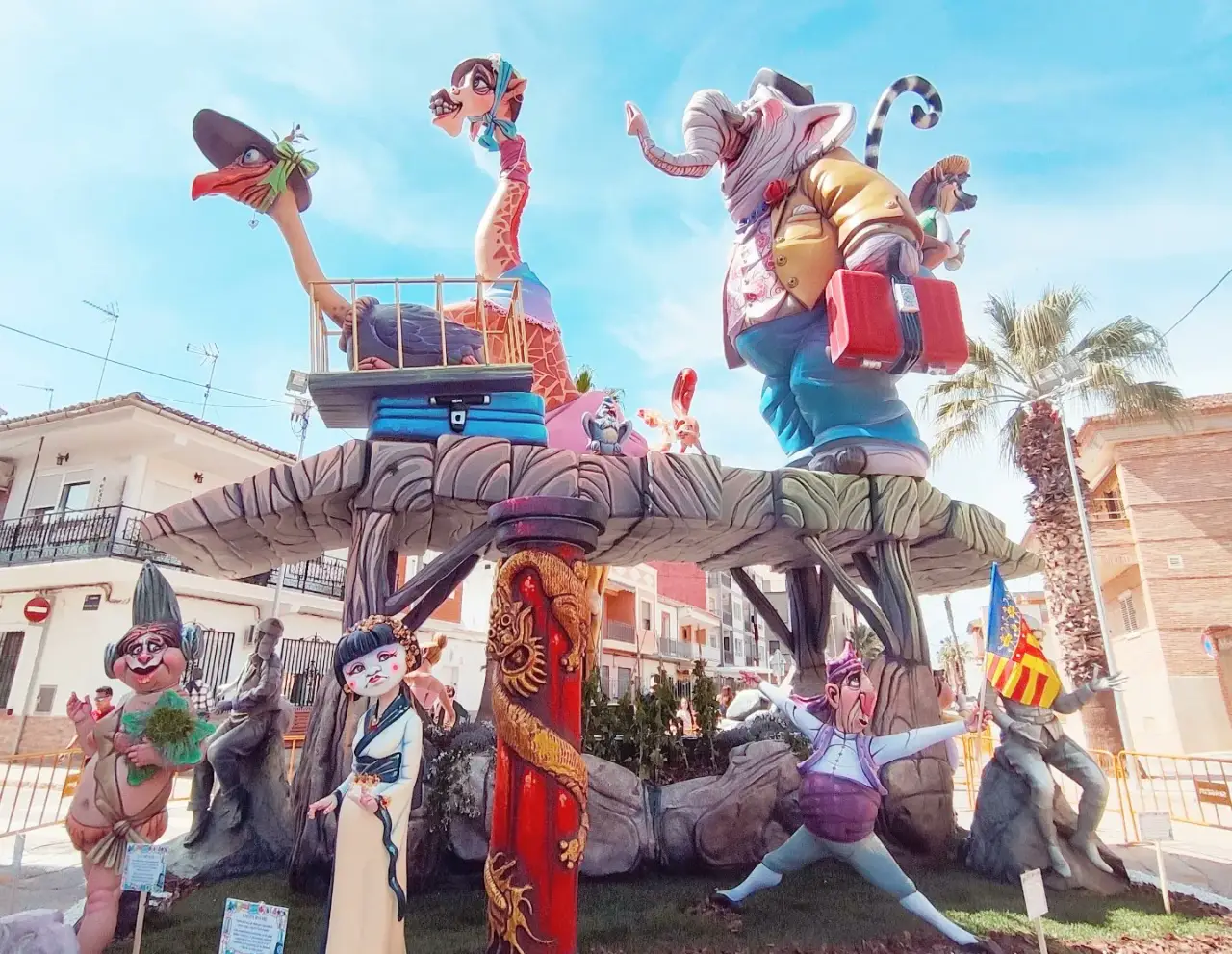Situated on Spain’s southeastern coast, Valencia is a vibrant city that seamlessly blends historical charm with modern innovation.
As the third-largest city in Spain, it boasts a rich cultural heritage, stunning beaches, and world-renowned cuisine. Recently named the European Green Capital for 2024, Valencia is also recognized for its commitment to sustainability and green living.
This distinction, awarded by the European Commission, acknowledges Valencia’s dedication to enhancing environmental sustainability and improving the quality of life for both residents and visitors. It highlights the city’s numerous green spaces and innovative sustainable mobility initiatives that contribute to its eco-friendly urban landscape.
Before You Go
Valencia enjoys a Mediterranean climate with hot summers and mild winters, making it a year-round destination.
U.S. and U.K. passport holders can enter Spain for up to 90 days without a visa. Travelers must show proof of return transportation, accommodation details, and sufficient funds for their stay.
What to Pack
Given Valencia’s Mediterranean climate, it’s important to pack for both warm days and cooler nights, especially during winter. Bring light clothing for daytime activities, swimwear for the beach, and comfortable walking shoes for exploring the city. For cooler evenings, particularly in winter, pack a warm jacket or sweater.
Sunscreen, sunglasses, and a hat are essential for sun protection year-round.
If you plan to explore Valencia’s historical sites or enjoy its vibrant nightlife, bring versatile outfits that can transition seamlessly from day to night.
What to See
Valencia offers a wealth of attractions that cater to a wide range of interests, from historical landmarks to modern marvels and beautiful beaches.
The Turia Garden
The Turia Garden is one of Spain’s largest urban parks, stretching nine kilometers through Valencia. It is also one of the main attractions in Valencia. This expansive green space features footpaths, leisure and sports areas, and romantic spots perfect for unwinding.
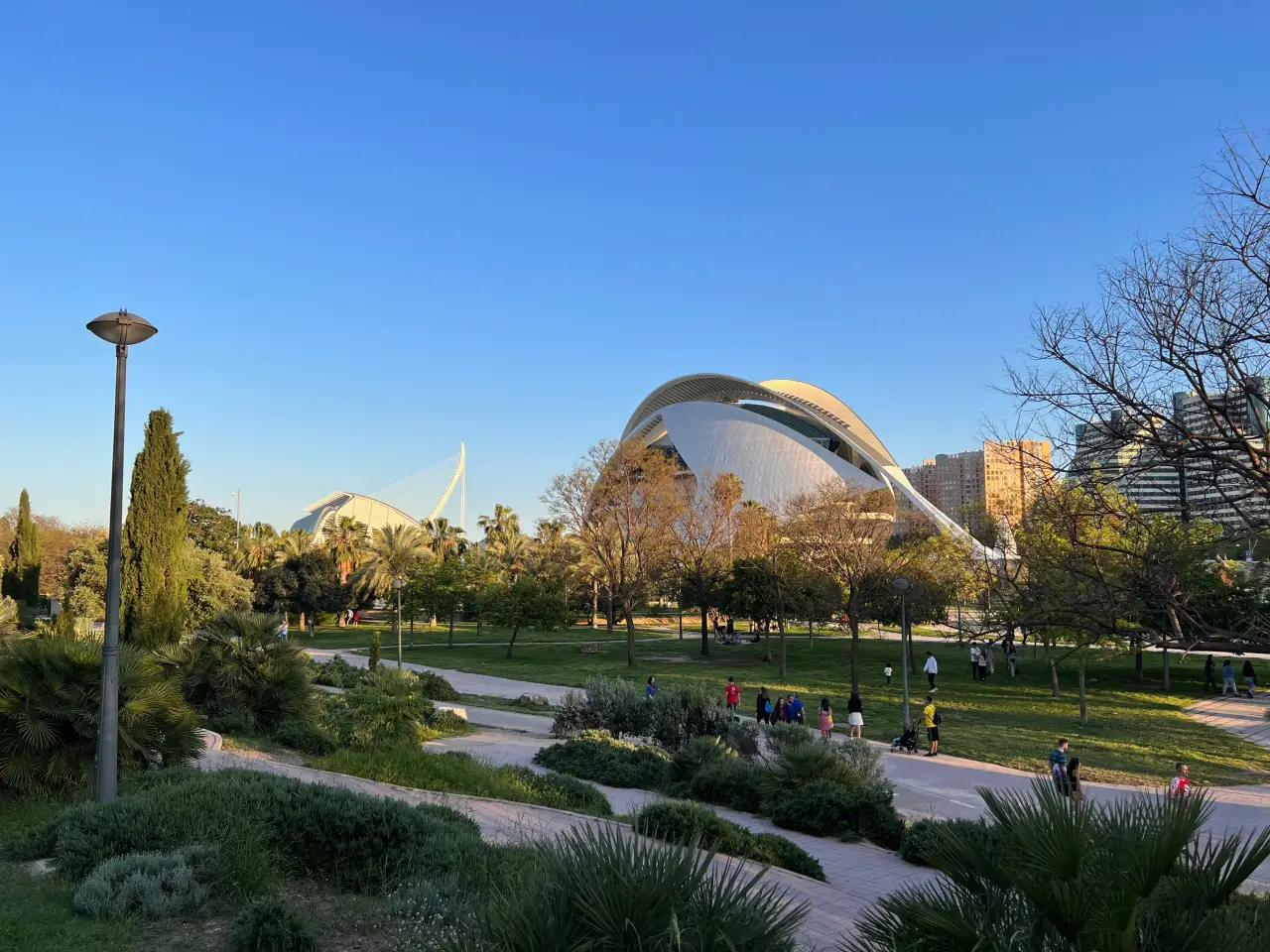
Valencia is a flat city, so the Turia Garden is the perfect place for running enthusiasts and those who prefer to cycle on bicycles, segways and tandems that can be rented here. You will find many bars and cafés with extensive terraces along the way, where you can take a break for refreshment.
From Cabecera Park to the City of Arts and Sciences, the Turia Garden is ideal for nature enthusiasts. The former riverbed is crossed by 18 historic bridges and runs alongside the city’s main museums and monuments.
The gardens are built on the former riverbed of the Turia River, which was rerouted to prevent flooding after a devastating flood on October 14, 1957. The Turia’s course was diverted south of the city, creating a vast tract of land that extends from west to east, bordering the historical center.
Various urban planners and landscapers designed sections of the park, recreating the river’s natural scenery. The result is a unique itinerary of palm trees, orange trees, fountains, pine woods, aromatic plants, ponds, sports facilities, and rose beds.
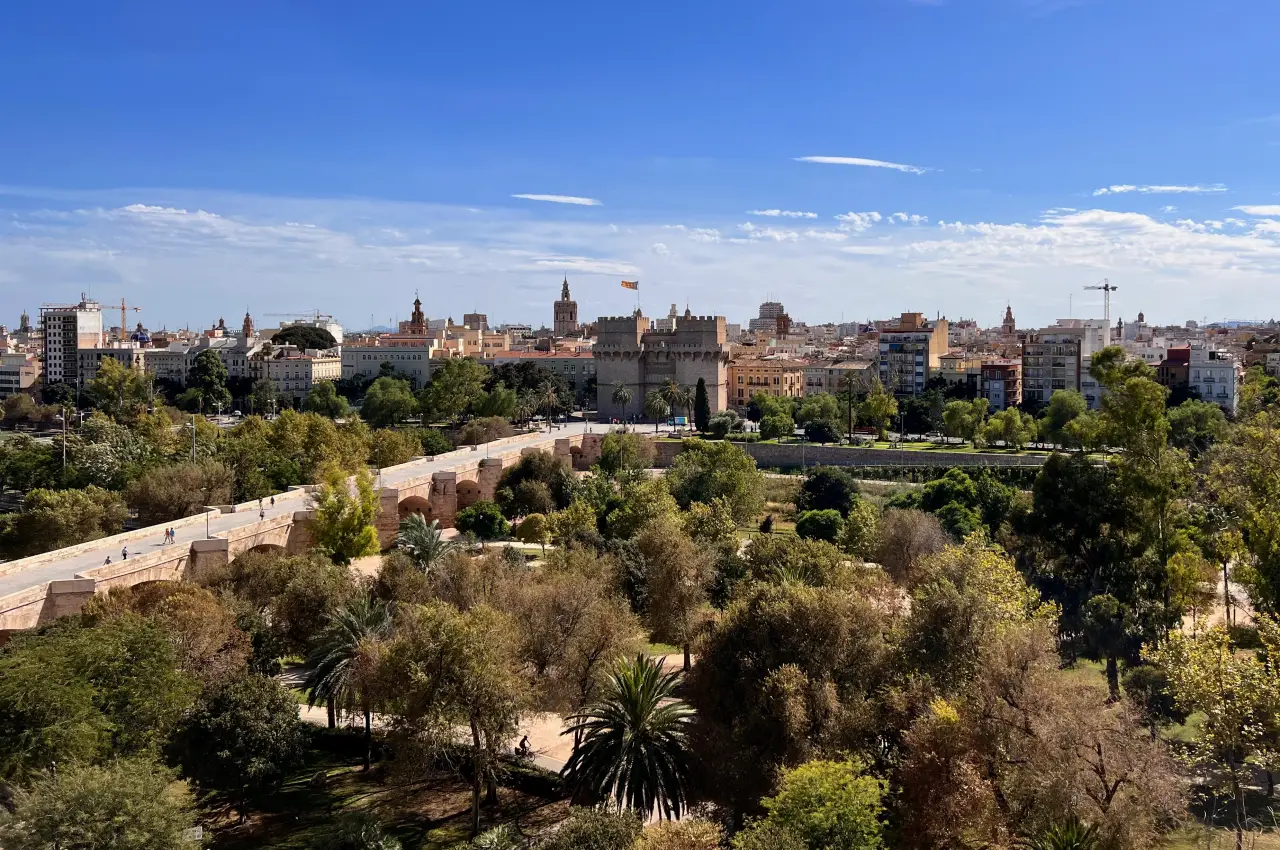
The former riverbed also connects several must-see landmarks in Valencia, such as the Serranos Towers, which once served as a gate in the old city walls and now offer a stunning viewpoint over the historic center and gardens.
Along the banks of the Turia, you’ll find the Valencia Institute of Modern Art (IVAM) and the Museum of Fine Arts. These attractions are located along the former riverbanks, creating a fascinating cultural itinerary that guides visitors through the heart of Valencia.
City of Arts and Sciences
This futuristic complex is a must-see for visitors of all ages.
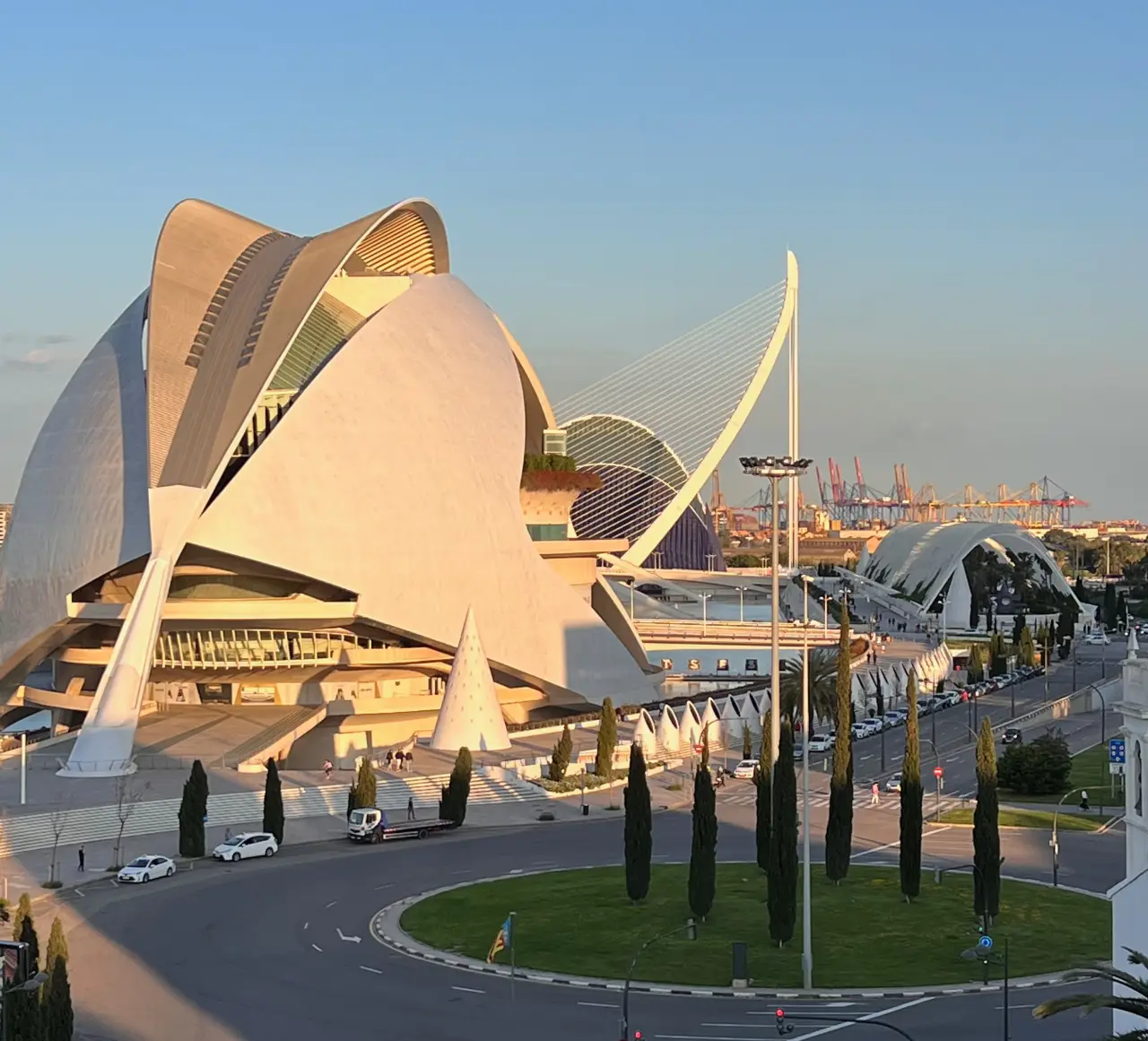
Designed by Santiago Calatrava and Félix Candela, it includes several stunning buildings:
- Hemisfèric: The Hemisfèric is a digital 3D cinema featuring an impressive 900-meter concave screen that nearly surrounds the audience, creating an immersive viewing experience. Several films are shown daily, primarily educational documentaries lasting no more than 45 minutes, making them suitable for all audiences. If you are traveling with children, a film is typically specifically geared towards younger viewers shown once a day.
- Oceanogràfic: The largest oceanographic aquarium in Europe, housing over 500 species of marine life, such as dolphins, belugas, walruses, sea lions, seals, penguins and sharks.
- Palau de les Arts: An opera house and performing arts center that hosts a variety of cultural events. If you are a music-lover, the Palau de les Arts is the place for you at the City of Arts and Sciences. Its program includes operas, concerts, zarzuela and ballet from October to November.
- Umbracle: The Umbracle is a huge, open-access garden covering more than 17,000 m2 where you can stroll around and take in the typical Mediterranean plants and contemporary sculptures. Terraza Mya opens its doors at night during the summer months, where you can have a drink under the moonlight.
- Science Museum: The Science Museum offers different interactive exhibitions about science and technology. You can visit without entering the ground floor, where there is usually a temporary exhibition, some shops, the bathrooms and a restaurant. You will need a ticket for the remaining exhibitions.
Valencia Cathedral
This stunning cathedral, also known as the Metropolitan Cathedral–Basilica of the Assumption of Our Lady of Valencia, is a must-visit. It houses the Holy Grail, believed by many to be the actual chalice used by Jesus during the Last Supper. The cathedral’s impressive Gothic architecture is complemented by its Baroque and Romanesque elements. Don’t miss the Miguelete Tower, which offers breathtaking views of the city.
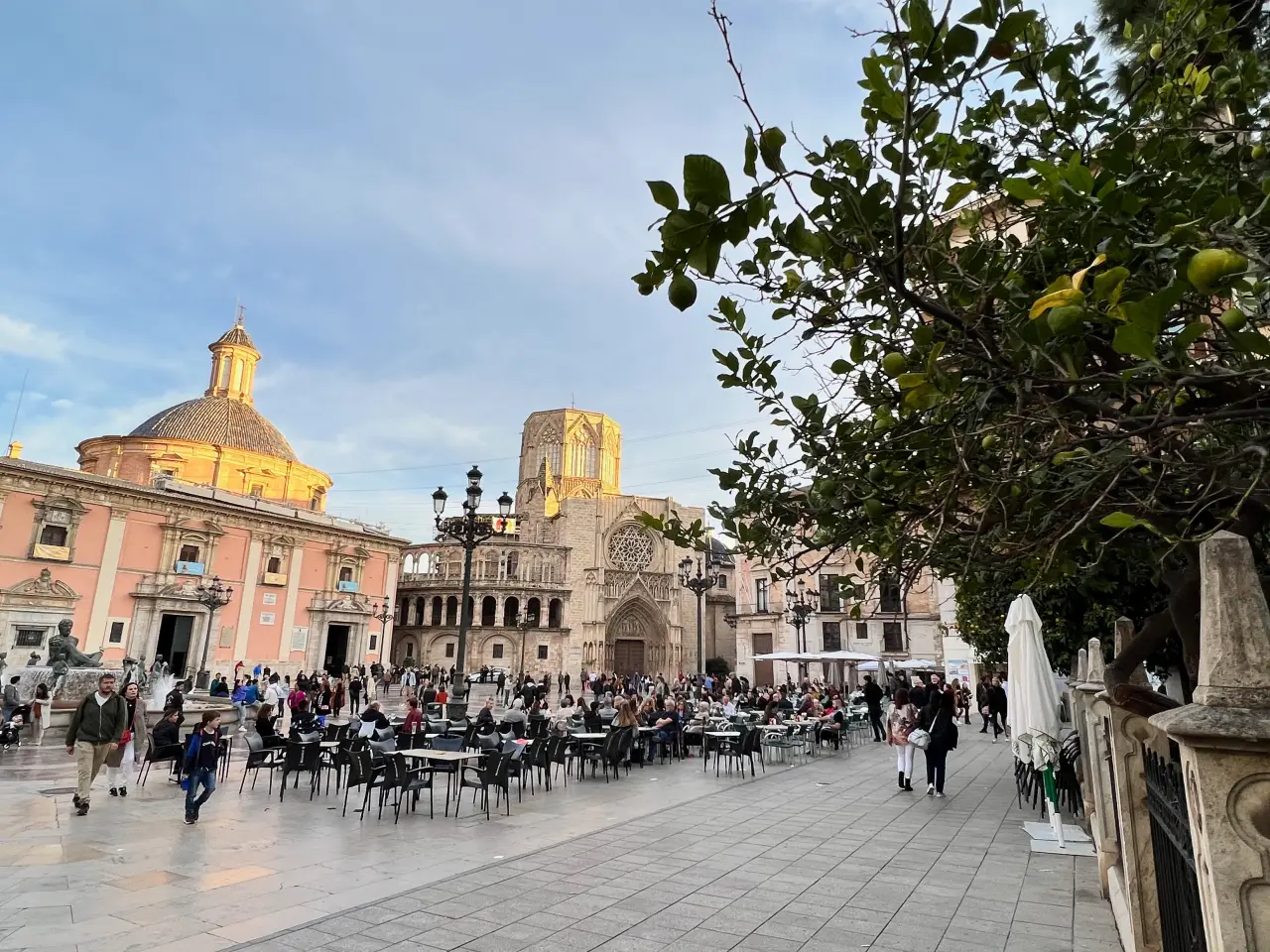
Torres de Serranos and Torres de Quart
These medieval gates once served as the primary entrances to the city. The Torres de Serranos, built in the 14th century, are among the best-preserved Gothic city gates in Europe. The Torres de Quart, constructed in the 15th century, bear the scars of historical battles and offer a fascinating glimpse into Valencia’s past.
Lonja de la Seda
This UNESCO World Heritage Site is a prime example of Gothic architecture. Originally built as a silk exchange in the late 15th century, the Lonja de la Seda features a magnificent main hall with twisted columns and a beautifully detailed ceiling. The building is a testament to Valencia’s prosperous mercantile history.
Ruzafa
Ruzafa, Valencia’s trendy and bohemian neighborhood, is known for its vibrant atmosphere, eclectic mix of bars and restaurants, and thriving arts scene. Once a traditional working-class district, Ruzafa has transformed into a cultural hotspot, featuring colorful street art, boutique shops, and lively markets.
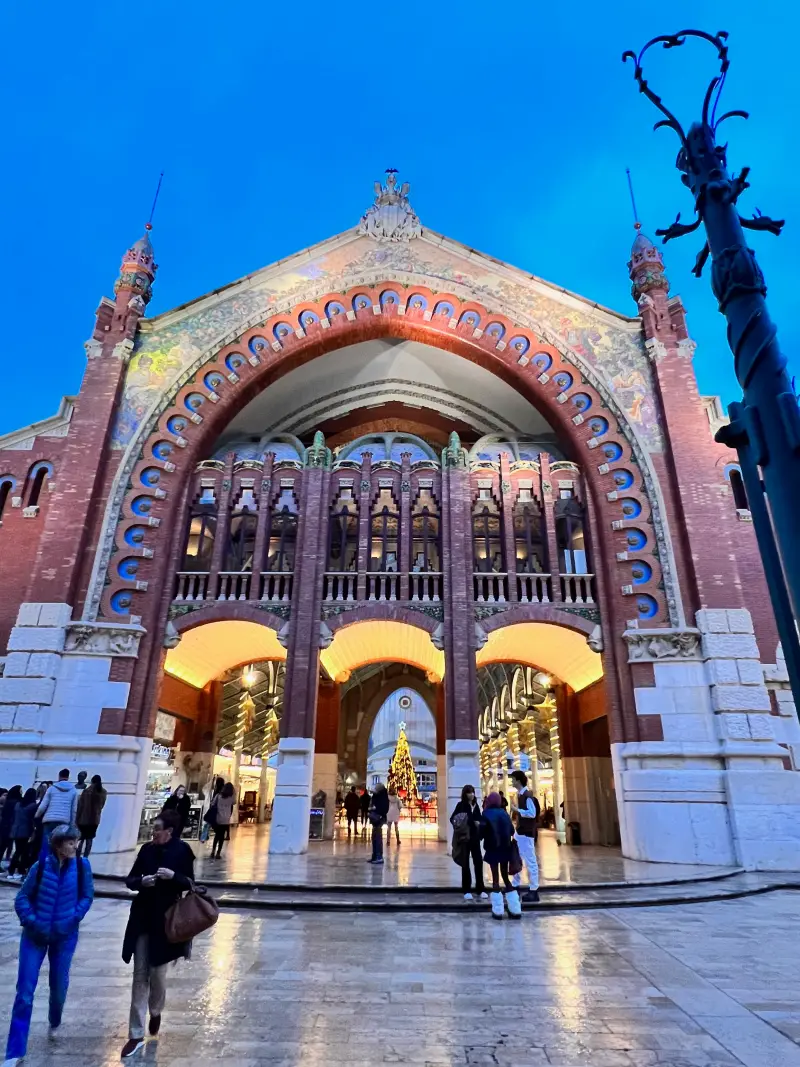
Nearby, the stunning Mercado Colón, a large building that occupies 3,500 m², offers gourmet food stalls and chic cafes, adding to the area’s allure. Join the locals here and enjoy a refreshing gin & tonic while soaking in the lively ambiance.
Its bustling nightlife, diverse dining options, and regular cultural events make it a favorite destination for both locals and visitors seeking an authentic Valencian experience.
Central Market
Valencia’s Central Market, one of the largest in Europe, is a bustling hub of local life and a must-visit for food lovers. Housed in a stunning modernist building, it features over 1,200 stalls offering fresh produce, meats, seafood, and gourmet delicacies. Join the locals as they shop for daily essentials and savor traditional snacks in this vibrant and colorful marketplace.
Open from 7 AM to 3 PM, Monday to Saturday, join the locals as they shop for daily essentials and savor traditional snacks in this vibrant and colorful marketplace.
Bioparc
Situated in Cabecera Park, within the former Turia riverbed, the Bioparc is a new generation zoo in Valencia. There are close to a thousand animals of 150 different African species with specially designed habitats to ensure their well-being and comfort.
The park is open 365 days a year from 10:00 to 18:00. From April to September opening hours are extended to 20:00 and 21:00.
Marqués de Dos Aguas Palace
This is a ceramics museum that houses the largest national collection of ceramics, dating from the 18th century to the contemporary period, and includes pieces by Picasso. You can virtually visit the ceramics museum.
Malvarrosa Beach
This popular urban beach features golden sands and clear waters, making it perfect for sunbathing and swimming. The beach is also home to a lively promenade lined with palm trees, seafood restaurants, and cafes. Enjoy a leisurely meal of fresh paella or tapas while taking in the stunning sea views.
Playa de las Arenas
Adjacent to Malvarrosa Beach, Playa de las Arenas is another excellent spot for relaxation and water activities. The beach is known for its vibrant atmosphere and is a favorite among both locals and tourists. It’s also a great place to experience Valencia’s beachside nightlife with numerous bars and clubs nearby.
Day Trips from Valencia
If you’re planning to explore more of Spain beyond Valencia, don’t miss our guide on the 10 Day Trips from Valencia. This article is packed with recommendations for incredible destinations that are just a short journey away.
Where to Stay
Valencia caters to all types of travelers with a range of accommodation options:
- Luxury Hotels: The Westin Valencia, known for its elegant rooms and beautiful gardens, and the Hotel Las Arenas Balneario Resort, which boasts a beachfront location and extensive spa facilities, are top choices for luxury stays.
- Budget Options: For travelers on a budget, numerous hostels and budget hotels offer comfortable accommodations without breaking the bank.
What to Know
Valencia has a rich multicultural heritage shaped by Roman, Visigoth, Moorish, and Christian influences. The city is famous for its festivals, particularly Las Fallas, a vibrant celebration in March featuring elaborate sculptures, fireworks, and street parties. During Las Fallas, the city center closes to traffic, allowing pedestrians to fully enjoy the festivities.
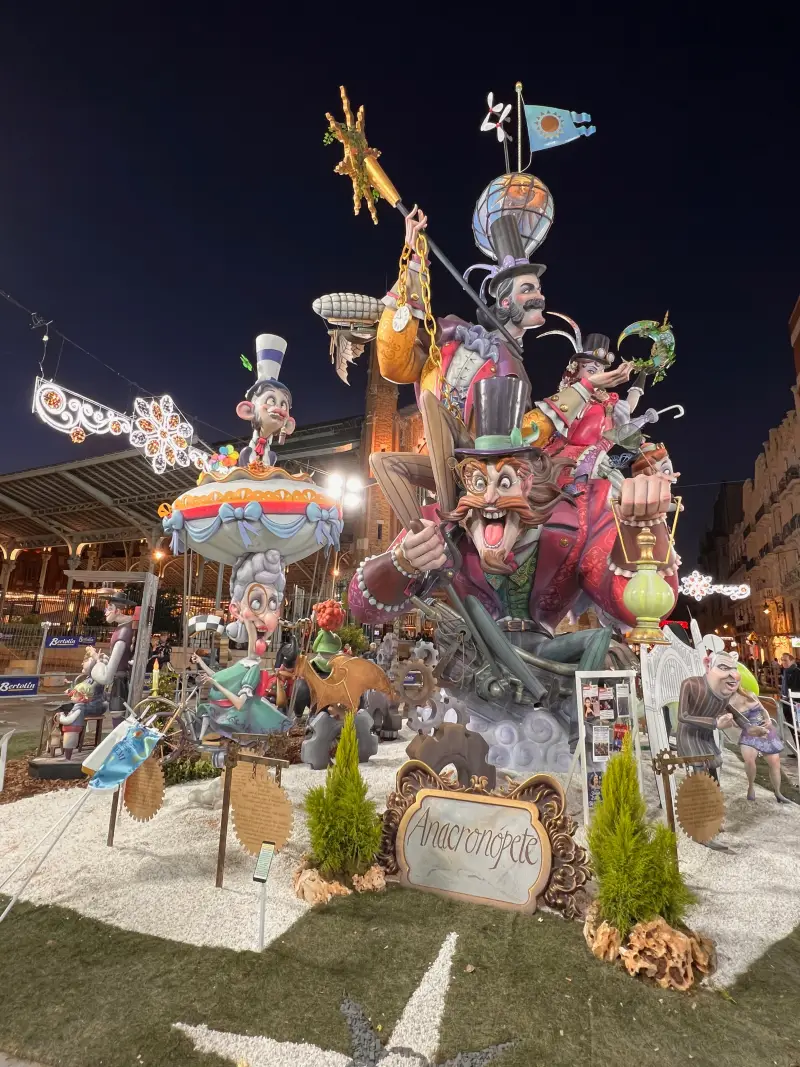
The festival is renowned for its spectacular parades, intricate and towering sculptures called “fallas,” and nightly fireworks displays. A key highlight is the “mascletà,” a daily afternoon event featuring synchronized firecrackers that create an intense and thrilling soundscape.
To watch this spectacle of sound you should head to Plaza del Ayuntamiento (Town Hall) at 2pm, any day from the 1st to the 19th March. And remember to keep your mouth open a little to avoid damaging your ears when it reaches 120 decibels!
Another highlight is La Tomatina, a massive tomato fight held in the nearby town of Buñol in August.
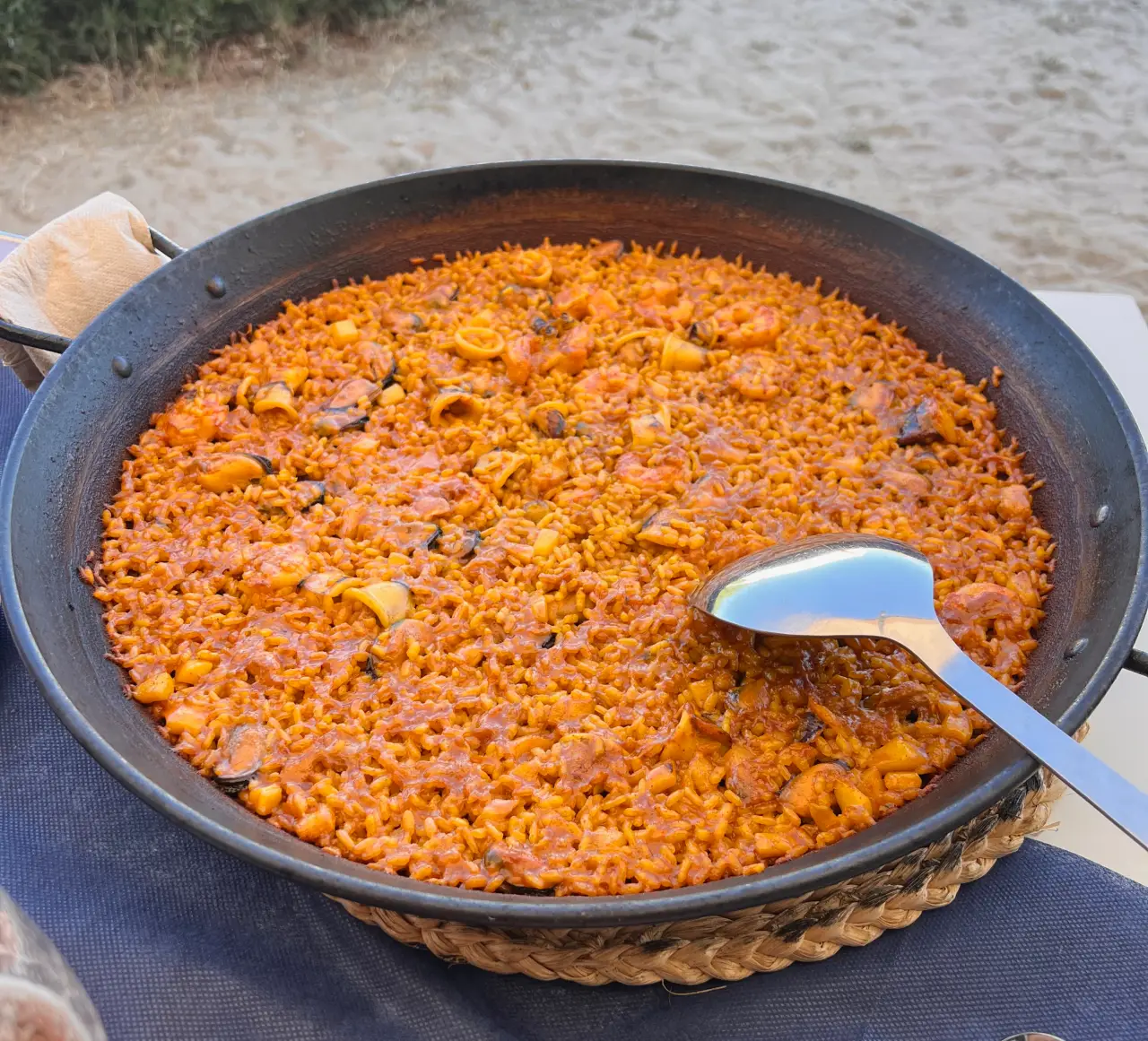
Valencian cuisine is renowned for its paella, a traditional rice dish that originated here. Other local specialties include horchata (a refreshing drink made from tiger nuts) and fideuà (a seafood dish similar to paella but made with noodles).
How to Get There
Valencia is well-connected by air, with flights arriving at Valencia Airport from major cities across Europe. The airport is situated just 8 kilometers from the center of Valencia.
The city is also accessible by high-speed train from Madrid and Barcelona.
Once in Valencia, the public transportation system, including buses, trams, and a metro, makes it easy to get around.
In addition to public transport, Valencia offers various ride-hailing services such as Uber, Cabify, and Free Now, PideTaxi, providing flexible and comfortable options for getting around the city.
Free Now offers 50% (up to € 6,00) off your 1st FREENOW trip when you use our referral code: qbuvqzise. Not got the app yet? Download it here: https://m.free-now.com/JGMc/ywvsokto
Biking is also a popular way to explore the city, with numerous bike rental stations available and Turia Park is a popular spot for biking.

